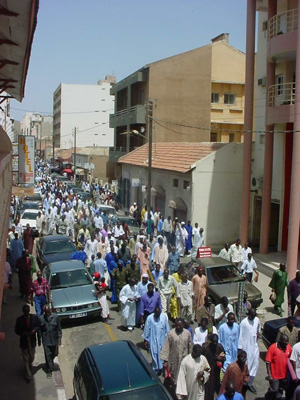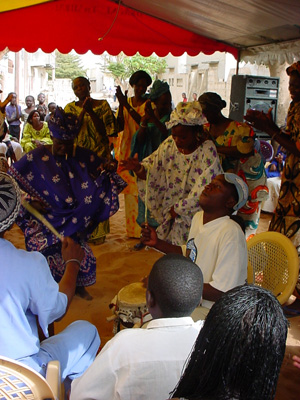 About Dakar
About DakarCapital of Senegal and Former Capital of French West Africa
 About Dakar
About Dakar
Capital of Senegal and Former Capital of French West Africa
A bustling city of more than two million inhabitants, Dakar is the political, commercial, and cultural capital of Senegal and home to people from all parts of the country. It is a remarkably multi-ethnic and religiously plural city, home to each of Senegal’s eleven major ethnic groups, vibrant communities of adherent to Senegal’s unique and especially tolerant version of Islam, a large Catholic community, a number of Protestant congregations, as well as Lebanese, European and some Vietnamese immigrants who have made Dakar their home for generations.
The city is composed of the Plateau, the Medina, and Grand Dakar. The Plateau is the formal administrative and business center; with its white-painted tree lined boulevards, the Plateau district was built after France made Dakar the capital of French West Africa in 1902. The Medina began as the African neighborhoods of the city during the colonial period. It is still densely populated and houses many popular markets and clubs. Grand Dakar includes a variety of neighborhoods ranging from well to do through middle income and poor. Dakar, like many other African cities, has seen rapid growth since independence in 1960 and its suburbs continue to expand.
 French is the official language of Senegal. Wolof is widely spoken as a first or second language and has become the vehicular language in Dakar. Other important languages are Pulaar, Serer, Mandinka/Bambara, Joola, and Soninke. An increasing number of Senegalese young people learn English in high school. Knowing a bit of English has long been a sign of hipness in Dakar’s youth and music scene.
French is the official language of Senegal. Wolof is widely spoken as a first or second language and has become the vehicular language in Dakar. Other important languages are Pulaar, Serer, Mandinka/Bambara, Joola, and Soninke. An increasing number of Senegalese young people learn English in high school. Knowing a bit of English has long been a sign of hipness in Dakar’s youth and music scene.
Dakar offers a vibrant cultural landscape, indicative of Senegal’s place as a crossroads of African, Islamic and European culture. On any given Dakar day you might see, hear or experience gamou all-night chanting of Koranic verses; the complex drumming rhythms of the djembe at street parties to commemorate weddings, funerals and baptisms; the National Ballet’s performances of European and African dance; or the amazing range of clubs featuring Senegal’s neo-traditional mbalaax or fusion form, more conventional pop bands, and rap groups influenced both by US hip-hop and rediscovered “traditional Wolof” rap.
Dakar is located on the Cap Vert peninsula and is bordered by the Atlantic Ocean. Temperatures are moderated by cooling ocean breezes and range in the 80s during July and August. The rainy season has been delayed in recent years so that rains have been sparse in Dakar and Northern Senegal during the program period. Swimming is possible on beaches close to the city center and several can be reached by public transportation. The resort area of the Petite Côte (with many tourist facilities around Saly-Portudal, Mbour, and Nianing) is about one-and-one-half hours south of Dakar.